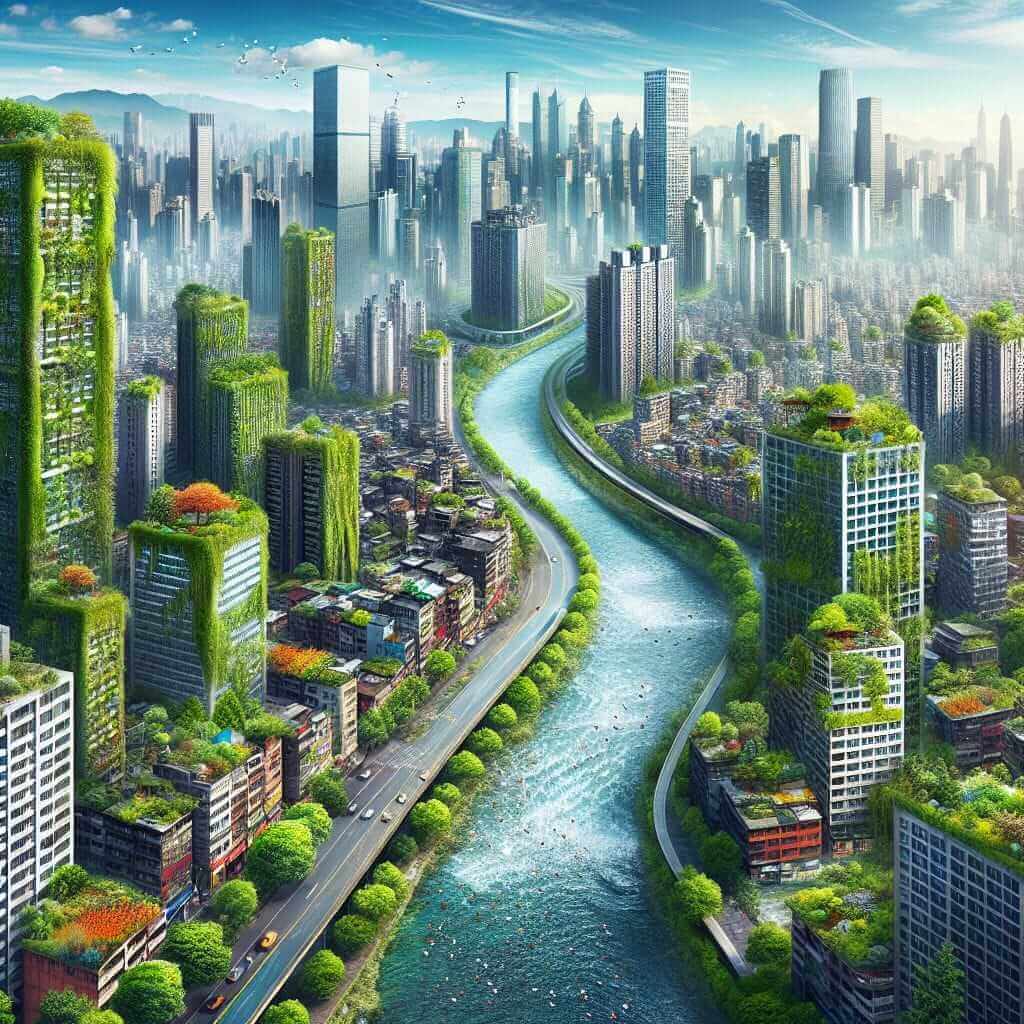The relationship between urbanization and its effects on wildlife habitats is a common topic in IELTS Writing Task 2, particularly in the realm of environmental issues. This topic explores the consequences of increasing urban sprawl on the natural homes of animals and plants.
Here are some potential IELTS Writing Task 2 questions related to this topic:
- To what extent do you agree or disagree with the statement that urbanization is the biggest threat to wildlife habitats? Discuss your views and provide relevant examples.
- Some people argue that urbanization and wildlife conservation can coexist. Others believe that urban development inevitably leads to habitat destruction. Discuss both views and give your opinion.
- What are the main impacts of urbanization on wildlife habitats, and what measures can be taken to mitigate these negative effects?
Sample Essay: Urbanization and Wildlife Coexistence
Let’s choose question number 2 to develop a sample essay:
Some people argue that urbanization and wildlife conservation can coexist. Others believe that urban development inevitably leads to habitat destruction. Discuss both views and give your opinion.
Essay Analysis
This question requires you to discuss both sides of the argument: the possibility of coexistence between urbanization and wildlife conservation, and the opposing view that urban development inherently harms habitats. You must present a balanced discussion, acknowledging both perspectives, before stating your own opinion.
Sample Essay
Urbanization, the increasing migration of people to cities and the resulting expansion of urban areas, has become a defining trend of the 21st century. While this phenomenon offers numerous benefits, it also presents significant challenges, particularly for wildlife and their habitats. This essay will explore the opposing views on whether urbanization and wildlife conservation are mutually exclusive or can coexist, ultimately arguing that a balanced approach is crucial.
Proponents of coexistence emphasize the potential for integrating nature into urban environments. They point to initiatives such as urban green spaces, rooftop gardens, and wildlife corridors, which aim to provide habitats and migration routes for animals within cities. Furthermore, they argue that raising awareness among urban populations about the importance of biodiversity can foster a sense of responsibility and support for conservation efforts. Successful examples, such as the Cheonggyecheon stream restoration in Seoul, demonstrate how urban design can be used to revitalize habitats and attract wildlife back to cities.

Conversely, critics argue that urbanization inherently encroaches upon natural habitats, leading to fragmentation and destruction. They cite the expansion of roads, buildings, and other infrastructure as the primary culprits behind habitat loss, which directly results in population declines and even extinctions of species. Moreover, they contend that the pollution generated by urban centers, including air, water, and noise pollution, poses significant threats to wildlife health and survival. The plight of the Javan rhinoceros, driven to near extinction due to habitat loss from urbanization in Southeast Asia, serves as a stark reminder of these consequences.
In conclusion, while the rapid pace of urbanization poses significant challenges to wildlife and their habitats, I believe that a balanced approach, incorporating thoughtful urban planning and conservation efforts, can allow for coexistence. By integrating green spaces, preserving existing habitats, and mitigating pollution, cities can become more hospitable to wildlife while still reaping the benefits of urban development. Ultimately, the key lies in recognizing the interconnectedness of human and natural systems and striving for a future where both can thrive.
Word Count: 322 words
Writing Tips
- Structure: Follow a clear structure (introduction, body paragraphs discussing both sides, conclusion) to present a well-organized and coherent essay.
- Vocabulary: Utilize a wide range of vocabulary related to urbanization, wildlife, and conservation. Avoid repetition and use synonyms effectively.
- Grammar: Ensure accurate grammar usage, including complex sentence structures and correct punctuation.
- Examples: Support your arguments with relevant and specific examples to illustrate your points effectively.
- Opinion: Clearly state your opinion and provide justification for your stance.
Vocabulary
- Urbanization (noun): The process by which towns and cities are formed and become larger as more people begin living and working in central areas. /ˌɜː.bən.aɪˈzeɪ.ʃən/
- Wildlife Corridor (noun): An area of habitat connecting wildlife populations separated by human activities or structures. /ˈwaɪld.laɪf ˌkɔːr.ɪ.dɔːr/
- Fragmentation (noun): The process or state of breaking or being broken into small or separate parts. /ˌfræɡ.mənˈteɪ.ʃən/
- Habitat Loss (noun): The process by which a natural habitat becomes incapable of supporting its native species. /ˈhæb.ɪ.tæt ˌlɒs/
- Mitigation (noun): The action of reducing the severity, seriousness, or painfulness of something. /ˌmɪt.ɪˈɡeɪ.ʃən/
Conclusion
The impact of urbanization on wildlife habitats is a multifaceted issue with valid arguments on both sides. By understanding the key arguments, using relevant vocabulary, and structuring your essay effectively, you can confidently tackle IELTS Writing Task 2 questions on this topic. Remember to practice writing essays on similar themes to improve your skills and confidence.